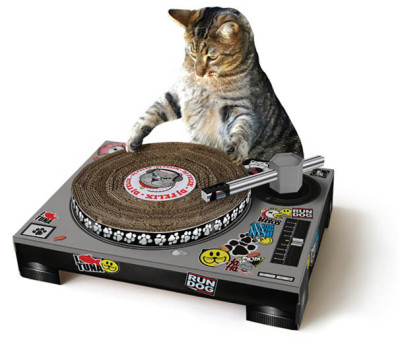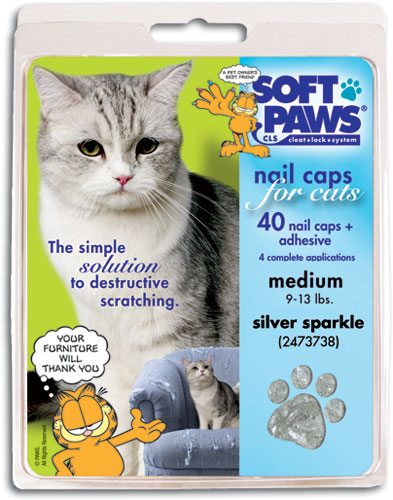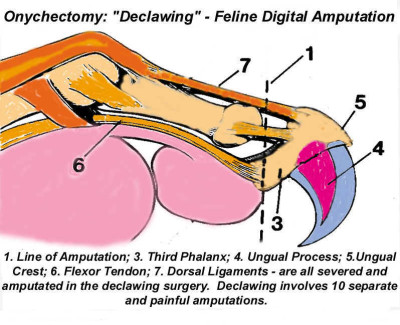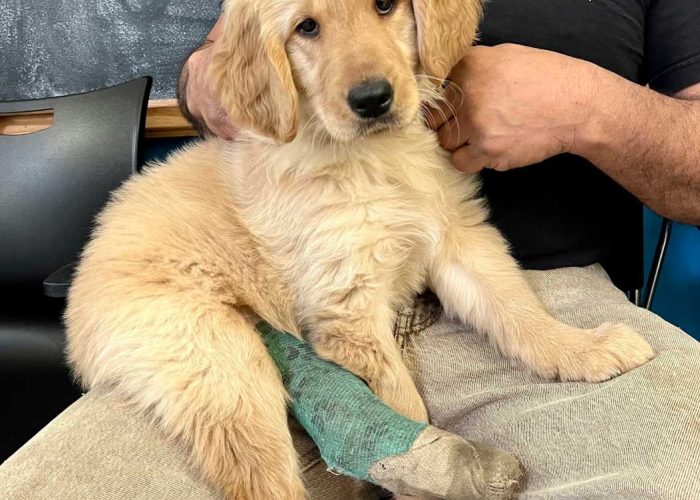Cats, right? Tell me about it.
I’ve lived with cats for the better part of a decade now, after growing up with dogs. One of the things it took me (far) too long to come to terms with was scratching. Not them scratching me, of course (though that did happen), but my furniture. I was not/am not the wealthiest person in the world, so the destruction of furniture that I will probably not be able to replace anytime soon makes me feel angry, frustrated, and like I’m being held hostage by the cats.
But it doesn’t have to be that way!
Understanding why cats scratch can help us understand how to approach these situations. Scratching serves a number of functions, and contrary to popular belief, your cat exacting “revenge” for some perceived slight isn’t one of them. It’s a natural, instinctual thing that you probably aren’t going to get them to stop doing completely. It allows them to get rid of the old, outer layer of their claws (which is why you find those little nail husks around your house). It helps them stretch and flex their paws. And last but not least, it allows them to mark territory both visually and chemically (cats have scent glands in their paws!). So, your cat scratching the furniture, when seen through this lens, is a natural behavior that serves a purpose for them. Rather than eliminating it, we should be redirecting it to some other place.
 This is where scratching posts come in. But my cat doesn’t like scratching posts! you’re saying to me. Well, the truth about scratching posts is that there’s a huge variety of styles and materials. Cardboard, carpet, sisal; these are all viable options. You can get a post, or you can get the “scratch ‘n’ nap” style of scratcher (a personal favorite in my house). There are inclines and half-circles and even some more… innovative(?) designs.
This is where scratching posts come in. But my cat doesn’t like scratching posts! you’re saying to me. Well, the truth about scratching posts is that there’s a huge variety of styles and materials. Cardboard, carpet, sisal; these are all viable options. You can get a post, or you can get the “scratch ‘n’ nap” style of scratcher (a personal favorite in my house). There are inclines and half-circles and even some more… innovative(?) designs.
Different cats are gonna like different materials, based on the grain of the material and how they like to sharpen their claws, so don’t run out and drop all your cash on a huge scratching post first thing. Plus, let’s not forget that cats seem to like something less the more money you spend on it. I don’t have any scientific proof of that claim, but I have years of anecdotal evidence and basically a whole room of unused cat toys.
Let your cats try a few things out. Get them a cardboard box and see if they like that; it’s a cheap, easy solution. Get an untreated 2×4, sand it down a little, and tightly and securely wrap and glue natural rope (like sisal) around it; see how that does. There are inexpensive solutions to these problems. The internet is filled with them. A good technique for getting your cat to pay attention to a new scratching post is to sprinkle a little bit of catnip on it as an attractant. Creating that positive association in your cat’s brain can make all the difference sometimes.
As far as disciplining your cat for scratching the furniture, only do it if you catch them in the act. Otherwise they don’t know what in the world you’re doing, just that you’re scaring them, and that might end up causing more behavioral problems than you’re already dealing with.
If a scratching post doesn’t work, or you want to just discourage the behavior altogether, Feliway is a fairly well-regarded product that uses synthetic cat pheromones to discourage marking, scratching, and other problem behaviors. It comes in a few different forms: plug-in diffuser, spray, wipes, and collars.
Declawing Cats
A word about declawing: don’t.
Now some more words about it: I get it, I get it. You don’t want the cat to scratch anything, you don’t have the time, money, or space to get/make a scratching post, and you don’t want to deal with the collateral damage to your furniture and belongings. These are all understandable things.
But claws aren’t like nails. You can’t just pull them out. Here, look:
As the image notes, declawing a cat requires 10 separate amputations of a cat’s toe up to the first joint. Apart from the pain of the surgery, and the recovery, there are some other things to consider:
- Cats are digitigrade, which means that, unlike most mammals, they walk on their toes. This means their bodies are essentially designed to distribute their weight across their toes as they walk, run, or climb. They use their claws for balance, exercising, and stretching muscles (in a way similar to how isometric exercises work for humans). It is literally the only way they can can exercise, stretch, and tone their back and shoulder muscles. According to Declawing.com, “Removal of the last digits of the toes drastically alters the conformation of their feet and causes them to meet the ground at an unnatural angle that can cause back pain similar to that in humans caused by wearing improper shoes.” That’s serious business.
- Claws are used for survival. But I have an indoor cat! Sure, me too. Two of them, in fact. One is a rescue who lived her kittenhood on the streets. She knows how to fight, how to protect herself with those claws. If she were to escape, or if a disaster were to happen and she got lost, or even if I suddenly became a mean, horrible pet owner and had my cat taken away, she would be without that protection. Worse yet, my other cat, who was born in a basement and doesn’t have much outside experience, would be at an even greater disadvantage; in that situation you are taking their primary instinctual means of defense. That’s a pretty awful end-of-life scenario you’re setting up for your beloved pet.
There are arguments about different types of declawing surgery, but they don’t hold a whole lot of water, and I see them mostly on sites where someone’s trying to sell me the surgery, if we’re being honest. But let’s talk about them for a second:
- The scalpel method is simply that: a scalpel is used to sever the tendons attaching the distal bone in each of the toes, thereby taking the claw, the bone, and the ability of the cat to regrow the claw.
- The guillotine method uses guillotine clippers to do essentially the same thing, but because of the quickness and relative imprecision of the surgery, there’s a greater chance to hit either the distal or middle toe bones. A little chip of bone in your cat’s foot will feel like walking on gravel for them, and even if it heals properly, it will be very painful for them to walk on until it heals. It’s also not uncommon for the toe pad to be cut off as well. All around, this is the declawing procedure with the highest risk of complications.
- The laser method uses a laser to achieve the same results. The laser provides for greater accuracy, and the heat of the laser cauterizes the blood vessels, making for a speedier, not-as-bloody recovery.
Using these definitions, it’s easy to see that the laser method would be the preferred method if declawing was absolutely necessary; there’s less chance up front of complications from the surgery. The selling points for the surgeries other than the guillotine method is that they don’t hurt as much, to which I would say that if we’re really concerned about the animal not being in pain, how about we don’t take its toes off? Whether we’re talking about the guillotine method, or even laser surgery, it’s still causing the same kind of problems with weight distribution, and therefore discomfort and pain, no matter what.
Twenty-two countries now have partial or full bans on declawing cats. For more information on declawing, this site has a nice, big, detailed article on declawing, written by a veterinarian (Warning: the article contains photographs of cats during surgery and recovery, so if you’re squeamish you might sit this one out).
There are scenarios in which declawing is acceptable. Generally speaking, people with immunodeficiency disorders are urged to declaw their cats for the simple fact that you never know what you’re gonna find under those nails. And sometimes absolutely nothing else works to make problem scratching go away, in which case we consider declawing to be an acceptable alternative to relinquishment and/or euthanasia. But these things are a last resort; the long-term effects on your cat’s health don’t really make it worth doing in any other situation but the most dire.
One very easy solution to problem scratching behaviors that people don’t always know about is Soft Paws or a generic equivalent. Soft Paws are just little soft tips you can apply to a cat’s claws:

Pretty simple stuff, and you can get them in different colors and just really jazz up your cat’s claws, if that’s your thing. Coordinate your outfits to match, you know? There are a lot of options. And you can find them at most stores. We apply them to cats after surgery when it’s requested by the owner.
The point is, there are a lot of ways of dealing with scratching that don’t require your cat to give up little toesies. It’s a behavior that serves a purpose for your cat, that helps your cat feel comfortable and able to do the things it’s supposed to do. Redirecting it to an acceptable substitute for your furniture is the least you can do for your furry friend.

